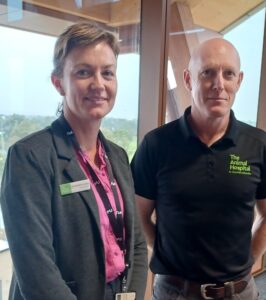A clearer picture of racehorse health
The world’s most sophisticated equine CT scanner has arrived in Western Australia and workers are in the final stages of constructing the clinical unit ready for its installation at Murdoch University.
Once complete, the advanced imaging centre at The Animal Hospital at Murdoch University (TAHMU) will feature state-of-the-art MRI and CT scanners, along with ‘day clinic’ stalls for visiting horses.
Racing and Wagering Western Australia supports the construction and, through the injury prevention scheme, is offering an ongoing rebate of half the cost of advanced diagnostic imaging for thoroughbred and standardbred racehorses, up to $1500.
As in human medicine, occasionally both forms of imaging are required to reach a definitive diagniosis. In such cases, TAHMU Clinical Director Dr Claudine Creasy said a half price MRI scan was offered for any horses needing further investigation after the initial CT scan.
“We’ve chosen the most advanced CT machine available, which means faster, high-quality images,” Claudine said.
“The lower limb from the foot to the knee can be scanned in less than 10 seconds.”

Dr Claudine Creasy and Associate Professor Dr Barny Fraser
A launch event to give racing participants a tour of the new centre, finishing with Murdoch’s new Boola Katitjin building overlooking the animal hospital, is being planned for early spring.
TAHMU Associate Professor Dr Barny Fraser said the CT machine promised to be a valuable resource in preventing racehorse injuries due to its capacity to identify the early changes in bone prior to catastrophic fracture.
“Common conditions such as palmar osteochondral disease (POD) and third carpal bone disease are hard to see on x-ray but both CT and MRI can show previously invisible bone changes which may be precursors to fracture,” Barny said.
“By getting an early and accurate diagnosis we can not only prevent fractures occurring, but also provide referring vets and trainers with the information they need to decide on the best course of treatment for that individual.
“This significantly improves horse welfare as well as increasing the chance of successful treatment and outcome – a win-win for all concerned.”
Susan de Ruyter

